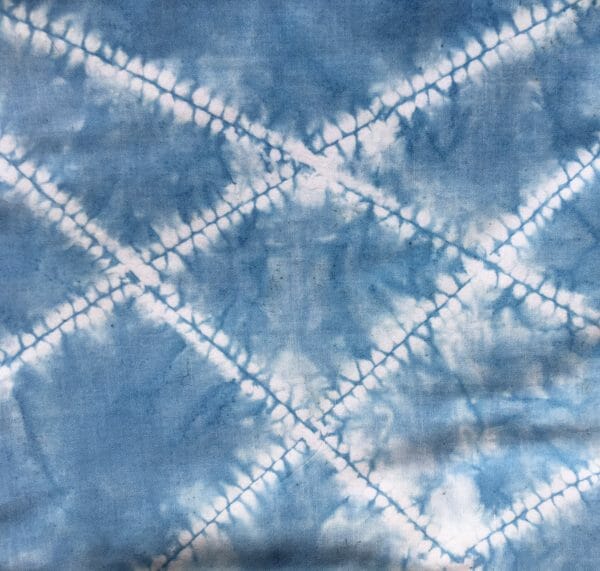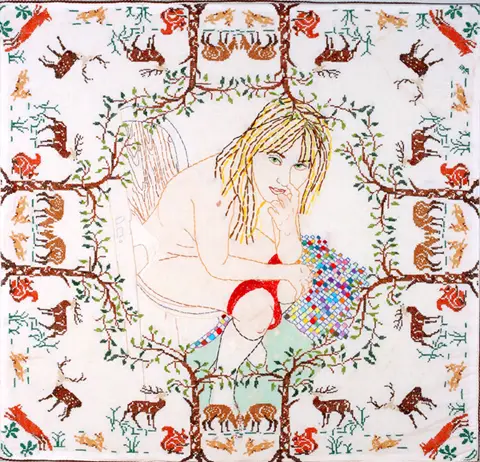Dyeing only a selected part of a textile can be tricky! Across the centuries people in many different cultures have found ways of preparing their threads or fabrics so that only part of it is dyed, creating patterns that please them. Collectively this is known as resist dyeing
As part of a birthday treat (this is who I am!) I recently visited an excellent resist-dyeing exhibition at ULITA, part of the University of Leeds. The emphasis is on resist-dyed textiles from West Africa, the Indian subcontinent, Japan and Indonesia. Drawing from its own collection it identifies and explains the principal resist-dyeing techniques. Well worth a visit the exhibition is on until 13th December 2018. My two favourite pieces were this beautiful cotton and wool tie-dyed dress from Tanzania and a wax-batik cotton cloth from Indonesia. The batik wax covering the background was deliberately cracked before dyeing to create irregular lines of colour.


Although there are many complex ways of dyeing with resistance; wax, pastes, stencils etc., the best known and most widely-used is tie-dyeing where the fabric is wrapped and tied tightly so that dye only penetrates the unbound areas. Japanese traditional dyers are particularly skilled in this art, often referred to by the Japanese name ‘shibori’ (to wring or squeeze). In India and Pakistan itsknown as ‘bandhani’ which is where the word bandana comes from. Grains of rice, beads, small pebbles, or in my case marbles, are used to tie up the cloth to create circles. This example is organic cotton dyed with madder.


To create a more controlled and symmetrical pattern the method often used is stitch resist. The cloth is usually folded and stitched with strong thread which is then pulled up tight causing the cloth to crease. Various patterns can be created in this way and, as usual, the Japanese have specific names for the different techniques/patterns. This is my version of ori nui (hand stitching next to a fold) using indigo dye. The indigo dyed a bit unevenly but I quite like the effect.

If you can’t get to see the ULITA exhibition there are great textile archives at the V&A in London and the Whitworth Gallery in Manchester. But my own favourite is the lesser-known Gawthorpe Textiles Collection at Gawthorpe Hall in Lancashire. The collection of over 30,000 textile related artefacts was started by Miss Rachel Kay-Shuttleworth who wanted to keep traditional textile techniques and skills alive and to open up learning to everyone. Unlike many other nineteenth and early twentieth century collections this one wasn’t built on wealth but on donations from enthusiasts from around the world. Way to go Miss Kay-Shuttleworth!




